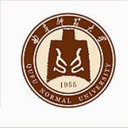Ultra-Liquid Chromatography Tandem Mass Spectrometry (UPLC-MS/MS)-Based Pharmacokinetics and Tissue Distribution Study of Koumine and the Detoxification Mechanism of Glycyrrhiza uralensis Fisch on Gelsemium elegans Benth.
Keywords
Abstract
Gelsemium elegans Benth. (G. elegans), which is a famous Chinese folk medicine, has been commonly used to treat certain types of skin ulcers and alleviate inflammation, headaches, and cancer pain. However, the extensive clinical use of G. elegans has been greatly hampered by its toxicity. As one of the most widely used herbal medicines, Glycyrrhiza uralensis Fisch, has a unique effect on detoxification of G. elegans. In the present study, a rapid and sensitive method using ultra-liquid chromatography tandem mass spectrometry (UPLC-MS/MS) was established and validated for determination of koumine, the most abundant molecule among the alkaloids of G. elegans, in rat plasma, tissue, and liver microsome. The developed method was successfully applied to the pharmacokinetics, tissue distribution, and in vitro metabolism study in rat with or without pre-treated Glycyrrhiza uralensis Fisch extract. Meanwhile, the expression level of CYP3A1 mRNA was analyzed to explain the detoxification mechanism of Glycyrrhiza uralensis Fisch on G. elegans. As a result, our work demonstrated that Glycyrrhiza uralensis Fisch could significantly affect the pharmacokinetics and tissue distribution of koumine in rats. The detoxification mechanism of Glycyrrhiza uralensis Fisch on G. elegans may be its cytochrome enzyme up-regulation effect.





